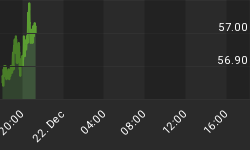The February 2, 2013, edition of The Economist presented a rousing endorsement for Scandinavian living. ("Cecil Rhodes once said that 'to be born an Englishman is to win first prize in the lottery of life.' Today the same could be said about being born Nordic.") The front cover ("The Next Supermodel: Why the World Should Look to the Nordic Countries") followed by an editorial and a 14-page supplement, cited the authority of 37 experts. Nowhere did the esteemed magazine mention three of the largest housing bubbles in the world. This does not serve the Economist's constituent short sellers. More fundamentally, it betrays the establishment's blank slate of lessons learned from the past decade.
The destructive quality of irredeemable credit, understood by some before the U.S. mortgage crash, obvious to more in its wake, was crystallized in the too-low, centrally controlled, interest rates that flushed a bacillus of fake money and credit, even though it was mathematically impossible for overzealous borrowers to produce cash in quantities sufficient to meet loan payments.
Nowhere does The Economist suggest Scandinavian countries are similarly hobbled despite the tell-tale data (published in every issue of The Economist). "The Next Supermodel" is being celebrated, at least partially, as a consequence of medicated interest rates.
A pinnacle of indiscretion, so we thought, was achieved in late-2006, when U.S. consumer debt peaked at 160% of GDP. Crosscurrents exist in the methodology for this calculation, so direct comparisons, by simple alignment of ratios, is difficult. As prelude, it is the conclusion here that Scandinavian consumer borrowing is past the point of no return.
Toronto Globe and Mail, November 1, 2012: "Household debt in Sweden now stands at 173 per cent of disposable income, following a steady climb from just 90 per cent in the mid-1990s, according to the Riksbank, Sweden's central bank.... That's well above the level reached in the United States prior to that country's housing crash." (As to the unlearned lesson by the fashionably educated: "[T]he escalation of household debt has gone hand in hand with house prices, which have increased threefold since 1995 as mortgage rates plunged from 10 percent to 4 percent.") From the San Francisco Federal Reserve, quoted in the Herald Tribune, June 25, 2012: Norway's "household debt to disposable income...ratio [is] north of 200 %..." Bloomberg, February 6, 2013: "Household debt [in Denmark] is about [300 per cent of] disposable income..." Finland is a laggard, depending on the source, at around 100% household debt to disposable income.
The Economist could follow its Scandinavian advert with a cover story on another praiseworthy economy: Canada. It might celebrate the departure of Canada's central banker, Mark Carney, who is escaping to Britain, where he will head the Bank of England. In the Supermodel spirit, it could commend Canada's banking system, voted the world's soundest by the World Economic Forum for the past five years. To adorn Canada with such laurels, The Economist would avoid mentioning the consumer debt to disposable income ratio, which has risen from 137% in 2007 to 165% in 2013. This is from Moody's, in its January 28, 2013, Special Comment: "Key Drivers of Canadian Bank Rating Actions." Moody's cut Canadian bank ratings. For a larger discussion on Canada, see "Exit, Pursued By Bear."
Those who are featured in round two of The Big Short will achieve their success not only by identifying "what?" but also "when?" The crux of the Canadian mortgage investigation is the CMHC (Canadian Mortgage and Housing Corporation). It bears some similarities to Fannie Mae and Freddie Mac, especially in the lack of interest it receives, just as Fannie and Freddie were universally acclaimed by experts in 2006, even though the CMHC is bumping up against its $600 billion mortgage-insurance limit. (To compare to the United States, multiply by nine. This would be $5.4 trillion of mortgage insurance in the U.S.) A large proportion of bank mortgage lending is insured by the CMHC. A close reading of the insurance documentation is necessary to understand the banks' exposure to poorly written loans. Also of note is financial-service company exposure to ballooning consumer credit.
It is an open question whether the CMHC limit will be boosted. It has been in the past, at $150 billion intervals. There is no question though, that the bust is on. The CMHC has already been forced to tighten mortgage terms of the mortgages it insures.
A second lesson learned since the Internet crash is the need to attract greater quantities of credit to sustain a bubble. Such intrusions of tighter standards by the CMHC in a market with few qualified buyers (Canadian home ownership is 70%; the U.S. peaked at 66%) will hasten the reckoning.
Is Canadian housing in a bubble? A recent and indicative news story on CTV (Canadian Television Network): "Experts Predict B.C. [British Columbia] Real Estate Bubble Will Remain Intact." A series of experts parade across the screen with such comments as "sky-high real estate prices are here to stay."
Housing sales in British Columbia have slowed to zip. Alas, the experts always find some pawns. This, from the Vancouver Real Estate Anecdote website, posted February 3, 2013: "I just opened an account with National Bank to trade [Bulletin Board] stocks....I know its super risky, but I need the money to buy a condo."
Requiescat in Pace.
Frederick Sheehan writes a blog at www.aucontrarian.com
















